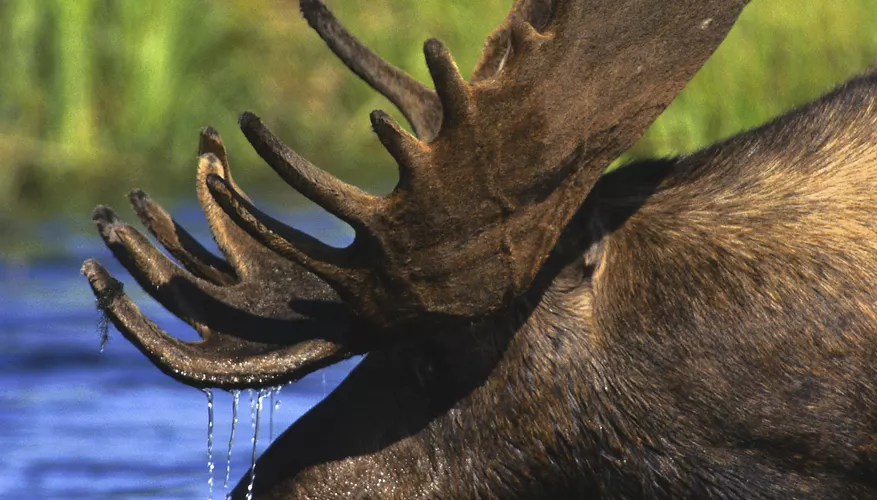When hiking through mountain forests, it’s common to come across tracks of elk, moose, or deer. These animals belong to the Cervidae family (deer family), which includes 47 species worldwide, ranging from 20 pounds to 1,800 pounds. In North America, the most commonly encountered species are white-tailed deer, elk, and moose.
Although they share some similarities, each species has distinct characteristics that make them easy to identify.

| Feature | Deer | Elk | Moose |
|---|---|---|---|
| Size | Smallest (100-300 lbs) | Medium-sized (up to 1,100 lbs) | Largest (up to 1,800 lbs) |
| Height at Shoulder | 3-4 feet | 5 feet | 6 feet |
| Antlers | Spiky, grown and shed annually | Large, branched, up to 4 feet high | Broad, palmate (shovel-like), up to 6 feet wide |
| Fur Color | Brown or gray | Reddish-brown in summer, darker in winter | Dark brown to black |
| Neck & Shoulder Fur | Short fur | Shaggy neck and shoulders | Bulbous nose, throat skin flap ("bell") |
| Speed | 30 mph, can leap 10-foot fences | 45 mph | 35 mph, also excellent swimmer |
| Swimming Ability | Not significant | Moderate | Can swim up to 6 mph |
| Habitat | Grasslands, forests, deserts | Mountainous forests | Remote forests, lakes, and rivers |
| Vocalization | Rare; high-pitched “oooh” sound | Loud bugling calls during the rut | Deep, resonant mating calls like a tuba sound |
| Social Behavior | Mostly solitary or in small groups | Large herds (up to 1,000 individuals) | Solitary or small family groups |
White-tailed deer are the smallest members of the North American Cervidae family.
Size: Weigh between 100 to 300 pounds.
Speed: Can run up to 30 mph and leap 10-foot fences.
Habitat: Found in grasslands, forests, and desert regions.
Antlers: Males grow spiky antlers in spring and summer, shedding them in winter.
Vocalization: Rarely vocalize, but their call is a faint, high-pitched "oooh".
Elk are significantly larger than deer and have distinctive antlers and vocalizations.
Size: Weigh up to 1,100 pounds, with shoulders standing 5 feet high.
Speed: Can reach speeds of 45 mph, faster than deer and moose.
Antlers: Males grow large, branched antlers that can extend 4 feet above their heads.
Neck & Shoulder: Have shaggy fur, particularly around the neck and shoulders.
Herd Behavior: Female elk form large herds of over 1,000 individuals.
Vocalization: Males bugle loudly during mating season, making distinctive morning and evening calls.
Moose are the largest and most distinctive members of the deer family.
Size: Weigh up to 1,800 pounds, with shoulders standing 6 feet high.
Antlers: Moose antlers are broad, palm-like, and can spread up to 6 feet wide.
Unique Features:
Large bulbous nose
Skin flap ("bell") hanging from the throat
Swimming Ability: Unlike deer and elk, moose are excellent swimmers, capable of reaching 6 mph in water.
Speed: Can run up to 35 mph on land.
Habitat: Found in remote forests, lakes, and rivers across Canada, Alaska, and northern U.S. states.
Vocalization: Their deep, resonant mating call is often compared to an untrained person blowing a tuba.
While hiking, you can identify whether a track belongs to a deer, elk, or moose based on the hoof shape.
| Feature | Deer Tracks | Elk Tracks | Moose Tracks |
|---|---|---|---|
| Size | Smallest | Medium-sized | Largest |
| Shape | Heart-shaped, with distinct toe points | Tooth-shaped, rounded at the end | Heart-shaped, but much larger |
| Hoof Orientation | Hoof halves point inward | Hoof halves remain parallel | Hoof halves point slightly outward |
Deer are the smallest, fastest, and most widespread members of the Cervidae family, often found in grasslands, forests, and even deserts.
Elk are larger, more social, and known for their shaggy fur and loud bugling calls, primarily living in mountainous forests.
Moose are the largest, with massive palmate antlers, superior swimming abilities, and a deep, resonant call.
Whether you’re hiking in the wilderness or spotting wildlife from afar, understanding these differences can help you identify which species you’ve encountered in the wild.
We created this article in conjunction with AI technology, then made sure it was fact-checked and edited by a Animals Top editor.